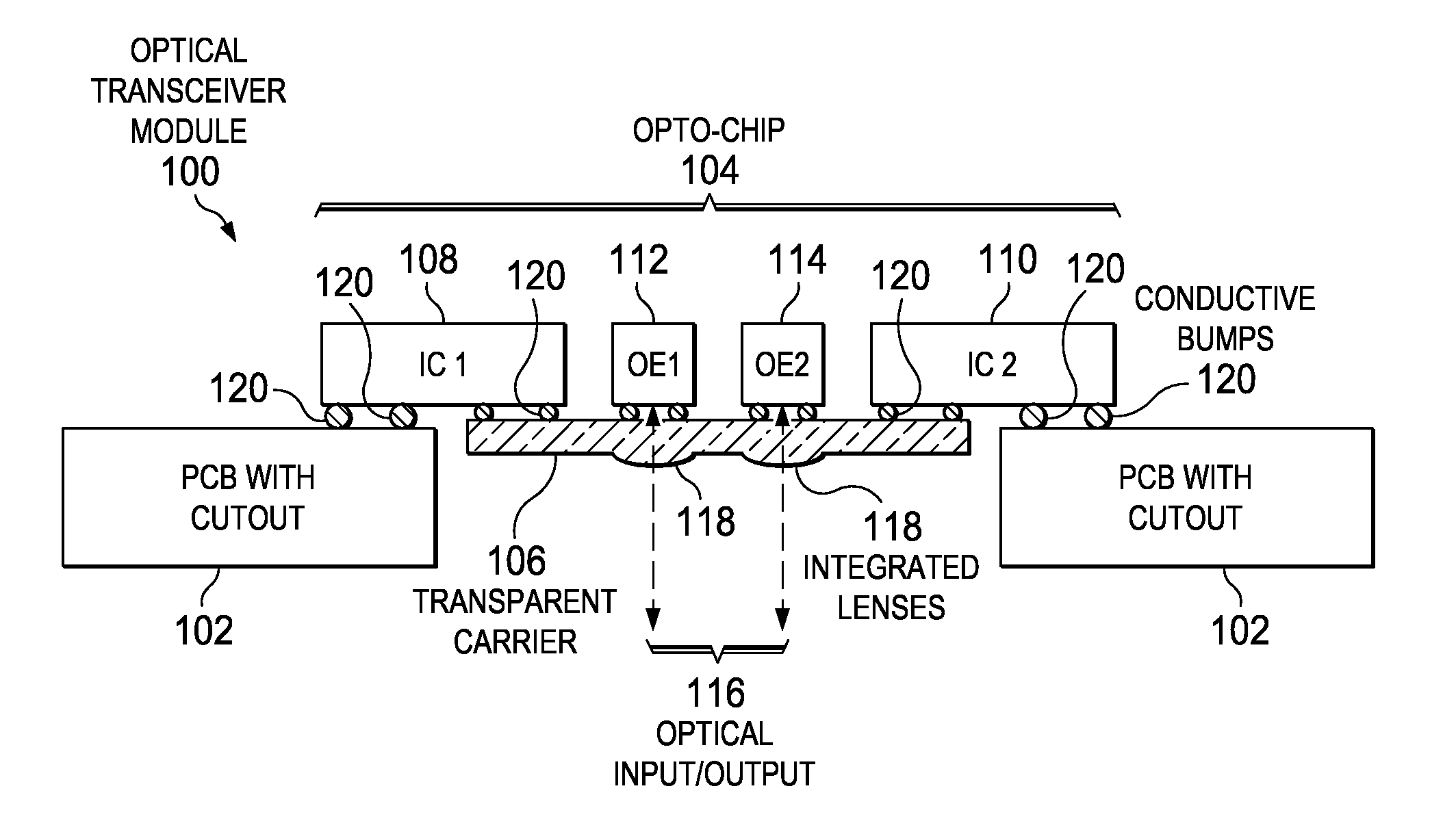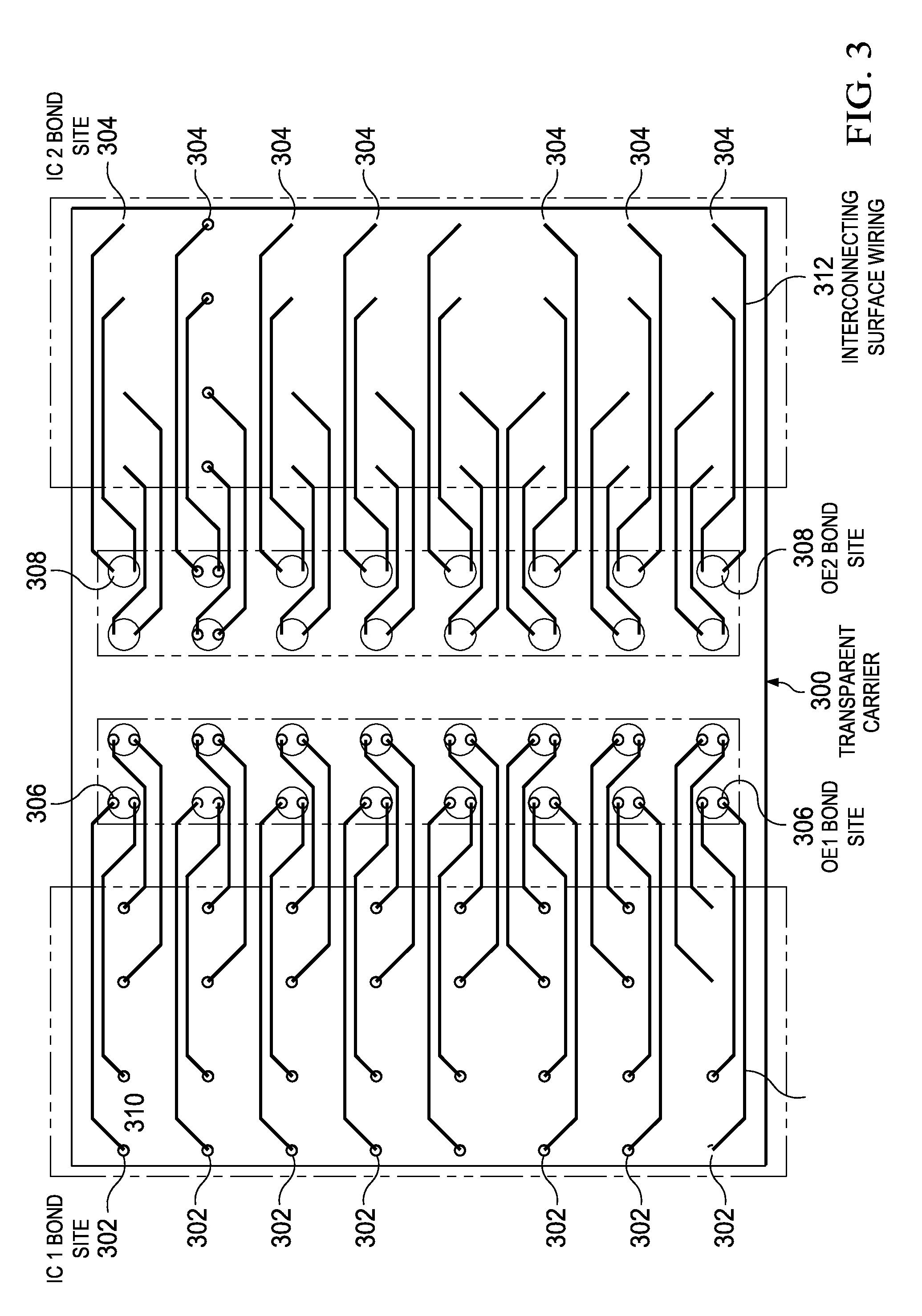Optical transceiver module
a technology of optical transceiver and optical module, applied in the direction of dielectric characteristics, instruments, optical elements, etc., can solve the problems of limiting the density and speed of these optical modules, affecting the speed of these modules, and limiting the density of these modules. achieve the effect of improving the optical transceiver modul
- Summary
- Abstract
- Description
- Claims
- Application Information
AI Technical Summary
Benefits of technology
Problems solved by technology
Method used
Image
Examples
Embodiment Construction
[0021]With reference now to the figures and in particular with reference to FIG. 1, an exemplary block diagram of an optical module apparatus is provided in which illustrative embodiments may be implemented. It should be appreciated that FIG. 1 is only exemplary and is not intended to assert or imply any limitation with regard to different illustrative embodiments. Many modifications to the depicted optical module may be made.
[0022]FIG. 1 depicts a block diagram of a side edge view of an optical transceiver module in which illustrative embodiments may be implemented. Optical transceiver module 100 is an electrical and optical component that is capable of transmitting and receiving pulses of light, which are used to communicate data. Optical transceiver module 100 includes printed circuit board (PCB) 102 and opto-chip 104.
[0023]PCB 102 mechanically supports and electronically connects electronic components, such as opto-chip 104, to other electronic components. PCB 102 may, for examp...
PUM
 Login to View More
Login to View More Abstract
Description
Claims
Application Information
 Login to View More
Login to View More - R&D
- Intellectual Property
- Life Sciences
- Materials
- Tech Scout
- Unparalleled Data Quality
- Higher Quality Content
- 60% Fewer Hallucinations
Browse by: Latest US Patents, China's latest patents, Technical Efficacy Thesaurus, Application Domain, Technology Topic, Popular Technical Reports.
© 2025 PatSnap. All rights reserved.Legal|Privacy policy|Modern Slavery Act Transparency Statement|Sitemap|About US| Contact US: help@patsnap.com



